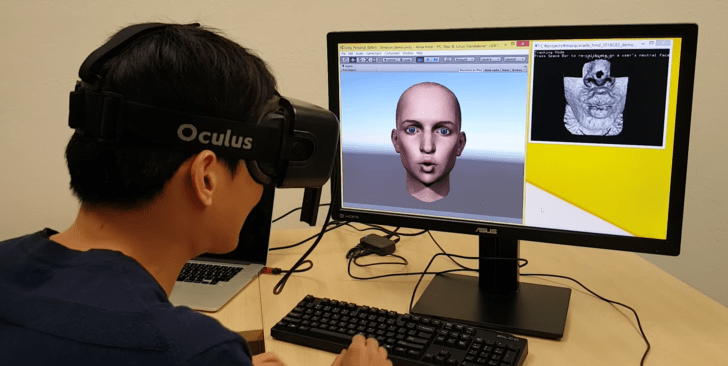The promises of VR are heavily focused on the idea that users can grow more enveloped in the digital environments they explore, but also central to the experience is that they become more connected with their virtual representations.
BinaryVR’s central focus has been on a system of computer vision face-tracking particularly focused on the mouth that can translate a user’s facial input to a virtual reality avatar.
The startup has just closed a $4.5 million Series A with investment from Atinum Investment, KT Investment, Pearl Abyss and Kakao Ventures. BinaryVR has now raised about $5.8 million to date.
The goal is all around making avatars less creepy and more representative of their user. Some existing social VR titles use microphone input to kind of move the mouth open and closed, which is better than not trying at all, but there’s not much immersion. Another approach lies in inferring emotions based on muscle movement measured in a VR headset’s face pad, an approach that both Samsung and MindMaze have experimented with, but the technology only measures certain emotions and is far from a live feed of a user’s facial expressions.
BinaryVR’s vision is going to rely heavily on the rest of the virtual reality market maturing a bit; their work kind of assumes that headset manufacturers are going to start integrating eye-tracking controls sooner rather than later.
Being a VR peripheral company in 2018 is no small task. VR platform makers like Facebook, Google and HTC are more focused on making their systems easy to use rather than integrating far-flung novice-centric add-ons. HTC has made some efforts to build integrations with startup’s producing their own hardware, but for the most part these add-ons have only proven how difficult it is to market a specialized product that sits beyond the estuary of mainstream VR content.
The company released its $349 developer kit in early 2017.
BinaryVR has seen some early success with partners looking further down the road. High Fidelity, an SF-based social VR startup, which has raised $72 million, has been working with BinaryVR to let its users go as deep down the VR rabbit hole as they would like. Everything is still a bit odd-looking because today’s GPUs can only deliver so much at VR’s scale, but these are all technologies that will probably find integrations into headsets at some point — it’s a question of scaling today’s market when the benefits aren’t as apparent that is the company’s big challenge.
Fortunately, there are obviously more approachable verticals for the company to tackle in the meantime. BinaryVR has been working to bring facial-tracking to smartphones with built-in sensors. Their “HyprFace” tracking tech seems to be pretty capable and the Animoji-like demos they’ve shown off are impressive. There are certainly plenty of players in the consumer mobile space; BinaryVR is also exploring what integrations would be possible inside vehicles, though the logical use cases perhaps aren’t as readily apparent there.
The Bay Area-based startup certainly has some interesting challenges as it navigates a space filled with tech giants shifting their weight and creating waves of potential as a result, but as users aim to drag themselves further into the digital worlds that VR game studios are creating, it’s becoming clear that new sensors are necessary to make this a reality.
